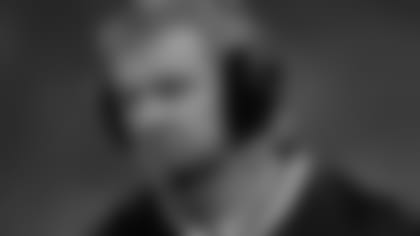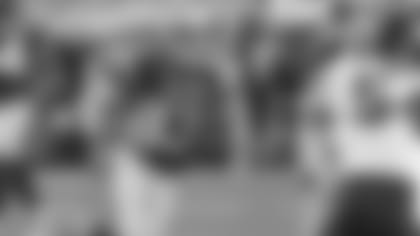From high school to college to the NFL, it's a football tradition. The day after every game, you sit down and watch it over again on film to see exactly what went right and what went wrong.
Each Monday throughout this 2012 Patriots season, we'll do the same thing the players and coaches are doing: breaking down film of the prior Sunday's contest in a new feature we're calling "After Further Review."
We begin with a look at the win over Tennessee, up to the point where the game got out of reach – Rob Gronkowski's touchdown catch to make the score 21-3 at the end of the first half. Here's how the Patriots did it:
Defensive discipline
On both sides of the football, the Patriots dominated the line of scrimmage. By halftime, the Titans had gained, as a team, just 20 yards (the same number they'd end with), while New England's Stevan Ridley had triple that amount on his own.
Defensively, the Patriots didn't do anything unusual. Operating mostly out of their base 4-3 set, New England used Rob Ninkovich and rookie Chandler Jones at left and right defensive end, respectively; Vince Wilfork and Kyle Love as the tackles; Brandon Spikes at middle (MIKE) linebacker, with Jerod Mayo on the weak side (WILL) 'backer and rookie Dont'a Hightower the strong (SAM, covering the tight end). Steve Gregory and Patrick Chung were the free and strong safeties, respectively, with Devin McCourty and Kyle Arrington at left and right corner.
There was considerable substituting of players at various positions, but rarely did the Patriots have to change to their nickel (five defensive backs) or dime (six DBs) looks to contain Tennessee's dangerous rushing threat, Chris Johnson, and mobile QB Jake Locker. The base was doing its job. Individual defenders were standing their ground, shedding blocks, and not overpursuing. McCourty was particularly disciplined against both the pass and the run.
When New England was in the nickel in the first few drives, they moved Arrington from right corner to slot, replacing him with Ras-I Dowling; Spikes or Hightower would come off. In dime, Love would also exit in favor of rookie safety Tavon Wilson.
The Titans opened the scoring in large part because of a 4th-and-1 deep ball completion from Locker to receiver Nate Washington. This play was successful because Arrington, covering Washington on the right side, failed to get a bump on him at the line of scrimmage. Washington easily got the necessary step on Arrington and Locker placed the ball where it needed to be.
Aside from that, and a couple of poor efforts by Dowling, the pass defense mostly kept the Titans in check by not allowing them to get deep. The Patriots defense kept their opponents – and the ball – in front of them and tackled well for the most part.
Jones was used in the same spot, but varied his stance from a hand on the ground to a stand-up position. He was equally effective from both.
On Wilson's second quarter interception, he was on the field in place of Chung in the base 4-3 look. He backpedaled into pass coverage, then paused momentarily as Locker looked short to his tight end. This led Locker to go with the deep ball.
But Wilson didn't buy the fake completely. Arrington had Washington covered tightly, but the ball bounced directly off Arrington's helmet. Luckily for the Patriots, Wilson had hustled after the ball and his slight delay earlier allowed him to be in position at just the right moment to make the diving grab in the end zone for a touchback, killing that Titans drive.
On the very next defensive series, Jones, with his hand on the ground, just blew past veteran left tackle Michael Roos, who went low to block Jones. The rookie made a stutter-step fake to the inside, then gave Roos a swim move outside. This allowed Jones to strip-sack Locker.
Hightower, who had dropped into pass coverage, but was reading Locker the whole time, ran to scoop up the loose ball. It was Roos, again, who whiffed on his attempted take-down of Hightower, allowing the rookie to get his first touchdown in the NFL.

McDaniels' imprint on offense
While the defense was fairly straightforward in its formations, the Patriots offense went with myriad looks. However, those variations were made with essentially the same personnel group, consisting of mostly 2-TE (Rob Gronkowski, Aaron Hernandez), 2-WR (Brandon Lloyd, Wes Welker), 1-RB (Stevan Ridley) formations, with limited substitutions. Offensive coordinator Josh McDaniels would then re-arrange his players to confuse the Tennessee defense.
Sometimes, Gronk and Hernandez lined up on opposite sides of the formation, from three-point stances or standing up. Other times, they were split wide on the same side, with Welker and Lloyd opposite them. There were even instances when one tight end would be lined up in a down position, while the other was standing.
The Patriots also employed newly-acquired tight end Michael Hoomanawanui as often in passing plays as in running sets. However, when New England went with no backs or a spread look, the base offense remained intact, with Edelman replacing Ridley. Hernandez would often line up in the backfield and either motion out before the snap, or stay there and run wheel routes after.
The shell game effect worked like a charm for McDaniels and the offense.
Ridley was able to gain an average of six yards per carry partly because the offensive line was blocking well, but especially because the tight ends were dominating the Titans' defenders. New England would often use an overloaded look, with Gronk and Hernandez in three-point stances on the same side of the formation. One would block out, the other in, to create a hole through which Ridley could run virtually untouched.
From this same look, the Patriots frequently shifted out, which allowed them to throw the ball from what appeared to be run formations. The fake end-around to Welker, which wound up as a long incompletion intended for Lloyd, came out of just this formation, stacked left. Tennessee bit hard on the fake, but Brady's ball began to wobble mid-air. Presumably, this is why Lloyd slowed up, but the ball kept on its trajectory. That's why it ended up looking like an overthrow.
But that was just one of only a handful of miscues by the offense. The few times Ridley was stuffed were beyond his control. In the first quarter, for instance, right guard Dan Connolly whiffed on blocking the Titans' MIKE, who shot in to drop Ridley for a loss. Newcomer Lex Hilliard also missed a block as a fullback, which resulted in Ridley losing yards.
On New England's first scoring drive, they predominantly used their 2-2-1 formation, with Gronk/Hernandez on opposite sides of line, standing up. During that drive, the pass that put Brady over 40,000 yards for his career had Gronk motion left to right pre-snap. At the snap, Gronk was stacked with Hernandez and Edelman wide right. Brady play-actioned to Ridley to that right side and the defense bit hard again. Only this time, Gronk crossed back to the left to green grass. The gain was for 28 yards.
The scoring toss to Hernandez (putting New England up 7-3) was from a three-TE, stacked left look. Gronk motioned out again to the right, and Brady play-faked again, this time to rookie Brandon Bolden right (the Titans, meantime, read run, with seven defenders in the box).
The deep safety went with Gronk to create a double-team, leaving the duo of Hernandez and Hoomanawanui open on the left. Brady could have gone to either player, but clearly felt more comfortable (rightly so) with Hernandez, who was single covered in a mismatch.
In the second quarter, with traditional run formations pre-snap, the play-action continued to work well.
Now up 14-3 after the Jones/Hightower strip-sack TD, McDaniels again went to the three-TE look in goal-to-go territory. Once again, the Titans read run. And who could blame them. Connolly had moved back from right guard to fullback – usually an indication that the Patriots would hand off.
Instead, Brady play-faked to Ridley, while Gronkowski shot for the right corner of the end zone. Hernandez went in motion to the left pre-snap, to draw his defender away from the right side (helping clear room for Gronkowski). It worked, as Gronk had just enough room to get open and Brady lobbed a perfect pass. The play was reviewed in the booth upstairs at LP Field, but the play stood as Gronk got both feet clearly in bounds.
Nose tackle

We'd be remiss if we didn't address one of the more notable plays of the game – the one that made a mess of Brady's face.
Titans right defensive end Kamerion Wimbley rushed left tackle Nate Solder at the snap, but kept enough distance that Solder couldn't lay a hand on him as he backpedaled in his pass protection stance. When Solder whiffed, Wimbley ducked under Solder, who couldn't bend low enough to block Wimbley down to the ground.
The result: Brady, scrambling to his right, never saw Wimbley coming. As the defender took Brady down, Wimbley's leg inadvertently struck Brady in the face, causing a large laceration on the bridge of the QB's nose.
Head coach Bill Belichick said Monday he didn't know if Brady had broken his nose.







































